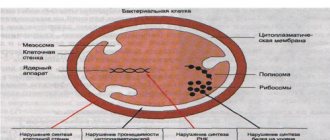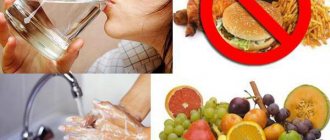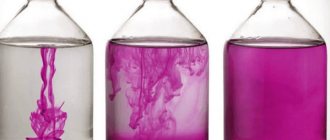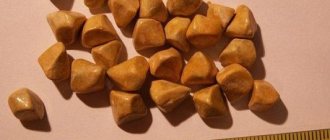Symptoms and danger of the disease
The enterovirus infection itself is not as dangerous for humans as it might seem at first glance.
It does not cause problems with further bowel function. Despite this, the disease can lead to dehydration, which is very serious. Lack of timely medical care leads to complications, and in 4% of cases ends in death. The main symptoms of the disease are nausea, vomiting, diarrhea, abdominal discomfort, and heartburn. All efforts are aimed at fighting them. When the intensity of symptoms decreases, relief occurs. The person feels much better and is on the mend. As it turns out, Coca-Cola can also treat intestinal flu. It is not at all necessary to take mountains of medications and swallow pills.
Rotavirus infection itself does not pose a danger to the patient, as many people think. The disease does not subsequently disrupt intestinal function. However, pathology can cause dehydration of the body, and this is truly dangerous. In case of inaction, the infection leads to a worsening of the disease and in 4% of sick cases leads to death.
The main symptoms of intestinal flu are as follows:
- nausea, vomiting;
- feeling of heartburn;
- severe diarrhea;
- abdominal discomfort.
Causes of infection
The second name for rotavirus infection is “intestinal flu”. The causative agent is not the influenza virus. Rotavirus was so named because of its resemblance to a wheel, which has a wide hub, short spokes and a smooth rim. The size of the pathogen is approximately 65-75 nm.
Children's bodies do not have strong immunity and are therefore susceptible to rotavirus infection. The pathogen is resistant to disinfectants and cannot withstand high temperatures.
Methods of transmission of infection are fecal-oral, sometimes water or household contact. Transmission of the pathogen through water that has not been disinfected is considered common. If the virus enters the central water supply system, an epidemic outbreak may occur.
Rotaviruses can be found in food. Dairy products are the first source of infection. In case of contact and household infection - due to neglect of personal hygiene.
You can get sick with rotavirus infection in the autumn-winter-spring period, but isolated cases are recorded throughout the year.
Rotavirus infection is a typical “disease of dirty hands”: in most cases, the pathogen enters the body through contaminated food or water.
It is from unwashed hands that infection most often gets into food.
There are frequent cases of infection through domestic means - through contact with a patient and using his things.
There is also some possibility of infection through airborne transmission.
The incubation period of the disease lasts from one day to five days. Then the acute phase begins abruptly with characteristic intestinal and respiratory symptoms - depending on the form of the disease, it can last from three to seven days, after which it enters the recovery phase. The last phase lasts 4-5 days; At this time, the body is already beginning to recover, but the risk of relapse remains.
Treatment
Rotavirus infection is treated with a fever above 38*C and the patient’s unsatisfactory state of health. It is better if the treatment is comprehensive - with the prescription of medications, diet and non-drug methods.
The patient is prescribed a nutritious diet with plenty of fluids. Frequent vomiting and diarrhea can lead to dehydration. This is especially true for young children. Therefore, plenty of fortified drinks are prescribed.
For high fever, antipyretics are indicated. For children they are prescribed in the form of syrups or suppositories, for adults - in tablets. If signs of dehydration appear, a rehydration drug, Regidron, is prescribed.
There is no etiotropic treatment that affects the cause of the disease for rotavirus. However, the prescription of antiviral drugs is still indicated. For what purpose is this being done? Antiviral agents have a complex effect.
- They delay the replication of the virus and speed up the healing process.
- Almost all drugs have an immunomodulatory effect, thereby preventing the addition of bacterial flora and the development of complications.
What drugs with antiviral effects can be used in treatment? Since they do not have a specific effect, any drug suitable for age, taking into account the prescriptions, can be prescribed.
Tsitovir
The drug Cytovir is an immunostimulant with an antiviral effect. Can be prescribed to adults in the form of capsules and to children in the form of syrup. It contains the amino acid thymogen and ascorbic acid.
The drug is used to treat influenza and other respiratory viral infections. It is not effective in treating rotavirus and is used only to boost immunity. Contraindicated in diabetes mellitus, pregnancy and breastfeeding.
Arbidol
Arbidol is the only antiviral drug that is included in the treatment regimen for rotavirus infection. The medicine is available in the form of a suspension for children from two years of age, in the form of tablets for children from three years of age and in the form of capsules for adults.
In addition to the treatment of rotavirus, Arbidol is used for influenza and respiratory viral infections, chronic herpes infection. Arbidol is contraindicated for children under two years of age and for those with individual intolerance. For the treatment of rotavirus, Arbidol is prescribed according to the scheme.
Ingavirin
The drug Ingavirin has antiviral activity against influenza viruses, RS viruses, and parainfluenza. It is used only in adults to treat diseases caused by these microorganisms. Children's dosage is prescribed from the age of seven. Contraindicated for pregnant and lactating women. It is not prescribed for rotavirus, since it does not affect either the cause of the disease or the immune system.
Orvirem
Orvirem is a drug based on rimantadine. Available only in the form of baby syrup. The medicine is indicated for the treatment and prevention of influenza only. It is also not prescribed for rotavirus. Contraindicated for children under one year of age.
Thus, in the treatment of rotavirus infection, only Arbidol can be used as part of complex therapy.
The sweet fizzy drink Coca-Cola was produced more than a hundred years ago. Initially, it was sold in pharmacies and positioned as a medicine. The composition of the drug was as follows: 3 to 1 parts coca leaves and cola nuts. The medication was designed to eliminate nervous and mental disorders and have a calming effect.
Ten years later, this product became available to everyone; it began to be sold in bottles. About 20 years after the release of this wonderful drug, cocaine was no longer added to it. New types of Coca-Cola have appeared (light, diet). So is it true that rotavirus can be cured with this seemingly harmful product?
How it works?
Coca-Cola is a highly carbonated, foaming drink that has a very sweet taste. It contains orthophosphoric acid, which is capable of destroying colonies of pathogenic microorganisms. The effervescent substance coats the irritated walls of the stomach and eliminates the urge to vomit.
Mode of application
If you are going to try the effect of Coca-Cola on yourself against rotavirus infection, then follow these rules:
- The drink should be chilled, but not ice-cold.
- Use sweet medicine only if there are no contraindications.
- Do not exceed the dosage established by practice.
- Using Coca-Cola does not give you a reason to refuse prescribed medications.
- If there is no effect within 24 hours, then cancel the experiment.
- Consult a doctor if you experience severe abdominal pain.
You need to drink Cola 100-150 milliliters at a time. Use it as needed. Do not release gases from the drink first. Many patients mistakenly believe that this will only increase bloating. But this is rather a myth. Drink the sweet medicine slowly, in small sips.
Contraindications
https://www.youtube.com/watch?v=-Sk7Q5NM0vg
Some patients should avoid such experiments. It is forbidden to give Coca-Cola to small children. You cannot be sure of the safety of such therapy. Do you want to risk your child’s health?! This highly carbonated drink should not be used by patients with gastritis and ulcers. These diseases can worsen, which will only worsen an already serious condition.
Reviews from experts
What do doctors say about this treatment? Doctors say that intestinal flu and Coca-Cola have no relationship. Despite this, it has been scientifically proven that the caffeine contained in the drink invigorates and gives energy. Orthophosphoric acid is capable of breaking down microbes and viruses that cause intoxication.
If we talk about general healing properties, doctors are skeptical about such therapy. Doctors say that Coca-Cola can become more of a means of prevention or help in the initial stages. Stomach flu is a serious illness that requires the use of medications to treat.
Carbonated drinks have a negative impact on health in the following ways:
- carbon dioxide;
- sugar in large quantities;
- orthophosphoric acid;
- caffeine.
Carbon dioxide is harmful to the gastrointestinal tract: the valve located between the stomach and esophagus weakens under the pressure of gaseous substances on it. As a result, food is thrown back into the esophagus, causing heartburn. Sugar and phosphoric acid destroy tooth enamel, and caffeine disrupts restful and deep sleep.
Proper use of the drink significantly improves well-being during rotavirus infections. How to take Cola correctly:
- Take liquid at room temperature.
- Pour into a glass and stir, releasing carbon dioxide.
- Consume a small amount every thirty minutes.
This mode of drinking Coca Cola is safe even for children. Kids lead an active lifestyle and the fact that they consumed a lot of sugar in their drink should not scare their parents. Running, crawling and jumping, playing, they use up all the energy they received from drinking Coke. It is important to understand that the use of this carbonated water in treatment is permissible if the child or adult does not suffer from excess weight and physical activity must be present.
With increased acetone (vomiting), a glass of Coca Cola can be an unexpected solution and will avoid the use of IVs and hospitals, since soda contains a significant amount of carbohydrates. In most European countries, Coca-Cola is used in treatment to eliminate symptoms of diarrhea and vomiting in infectious diseases.
Adviсe
You should adhere to a strict diet not only during treatment, but also for some time after recovery: completely exclude from the menu whole milk and dairy products, sweet fruits, baked goods, meat, as well as fatty and fried foods. It is healthy to eat porridge with water, vegetable soups, white bread crackers, and oven-baked apples. Feeding should be frequent and in small portions.
Very young children with rotavirus infection are not denied breast milk, no dietary restrictions are imposed, but they are ensured that they drink plenty of fluids. Breast milk itself contains antiviral components provided by nature, which will help the baby in the recovery process.
Occasionally, when rotavirus infection is severe, an infant may develop intolerance or partial intolerance to breast milk due to enzyme deficiency. In this case, you should reduce the number of breastfeedings and temporarily add lactose-free infant formula to the baby’s diet (until complete recovery).
Effective prevention of rotavirus, according to Komarovsky, should consist of vaccination. Only then should you wash your hands, always with soap, wash vegetables and fruits, and monitor the quality of the water your child drinks. To be fair, the doctor notes that no hygienic tricks can guarantee a low probability of infection.
If you are going to go to the sea with a small child, Komarovsky strongly recommends the rotavirus vaccine. Recently, this intestinal infection has become quite widespread at resorts, where children become infected with water. Most often, Rospotrebnadzor specialists “signal” about an unfavorable situation due to this disease on the Black Sea coast of the Caucasus, in Crimea and on the coasts of Bulgaria.
What is rotavirus and what are its symptoms? How dangerous is rotavirus infection and how to help a sick child, how effective is vaccination against this virus? Dr. Komarovsky will answer all these questions in the video below.
Is there evidence that cola is healthy?
- There are no OFFICIAL recommendations anywhere in the world for the use of cola as a treatment for anything (be it vomiting, diarrhea, headache or cough)!
- There is no data on the antiemetic or antiviral effects of any components of cola.
- There are no and will not be studies assessing the effectiveness of such approaches for dehydration (especially in young children), as this is potentially life-threatening!
Thus, by using an untested remedy when treating a child, you are conducting an unrecorded experiment, while denying proven effective approaches. Let's look at all the most popular myths about the benefits of cola.
Dietary rules during infection
A child and an adult must follow a certain diet. In the first hours, after the onset of vomiting and diarrhea, you do not have to feed the patient; as soon as the symptoms subside, it is allowed to give light foods.
It is important to exclude raw vegetables and fruits, not to give the patient fermented milk products, and to avoid preparing fried, fatty, salty and spicy foods.
The patient's menu should contain light and dietary products in grated form, and they can be prepared by steaming or boiling.
Summarize
If you are faced with a rotavirus infection, you may well try to cure yourself with Coca-Cola. Perhaps this tool will help you. Lack of improvement should prompt the patient to see a doctor.
Remember that it is unacceptable to conduct such experiments on children. This may further affect their health. Doctors do not recommend self-prescribing for intestinal flu.
The disease is not as harmless as it might seem at first glance. With severe diarrhea and vomiting, the patient requires hospitalization and inpatient treatment. Within the walls of a medical institution they certainly won’t give you Coca-Cola for this.
Prevention methods
How to protect a child from this disorder? Nonspecific prevention involves following the rules of personal hygiene. If someone close to you gets sick, you need to ensure that their dishes are thoroughly processed. The child should not be allowed near such a person for a week.
Answering the question of how to protect a child from pathology, we can recommend vaccination. Today there is a vaccination against rotavirus infection, which helps prevent the development of the disease in the baby.
Rotavirus infection is quite common in children and threatens the development of serious complications. To avoid negative health consequences, it is very important to show your baby to the pediatrician in a timely manner and strictly follow his instructions.
If you liked the article, you can like and comment!
How to use Cola to treat rotavirus infections
There is no such data in serious medical sources!
This infection is called stomach flu in Western countries. It refers to intestinal infections caused by rotavirus. The microorganism is quite stable in the external environment and can infect humans in different ways:
- contact - through household items;
- food - through contaminated fruits and vegetables;
- airborne - when a sick person sneezes and coughs.
Adults and children can become infected. Young children, especially those attending organized groups, are most often affected. After an infection, immunity remains, but the disease can occur again - in a milder form.
They cannot prescribe Coca-Cola in the hospital for rotavirus infection. Doctors do not allow themselves to make such prescriptions, as this may indicate incompetence. However, doctors themselves do not deny that cola can help with rotavirus.
In order to understand how cola affects the body, it is worth paying attention to the composition of this drink.
The most important substance in Coca Cola that can help with rotavirus is phosphoric acid. This component is able to suppress the development and growth of bacteria, as well as harmful fungi. Thus, the drink is used as a disinfectant.
Cola contains a large amount of sugar. That is why antiemetic components are added to it. Since rotavirus is often accompanied by vomiting, it is believed that cola can suppress it.
However, it is worth remembering that self-medication can be dangerous. According to official statistics, rotavirus can lead to human death. The mortality rate is as much as 4%. And for the most part, it is children who die.
Doctors recommend using Coca-Cola only as a preventive method in the initial stages of the disease. If the disease progresses very quickly and has already reached the stage where the person is severely dehydrated, drinking cola can be very dangerous.
The famous children's doctor Komarovsky has mentioned the benefits of Coca-Cola more than once. The doctor points out that this drink does not pose any particular danger and children can drink it in small quantities.
Dr. Komarovsky also talks about the benefits of Coca-Cola for rotavirus infection. Since the drink contains a high concentration of carbohydrates, this will not interfere with a weakened body at all, it will support it and restore some strength.
Rotaviruses are viruses that infect the intestinal tract and cause general symptoms of intoxication, dehydration and similar diseases. The infection occurs most often in young children.
The source of infection for this disease is a person (patient or carrier). Infection occurs through the oral-fecal route; the possibility of airborne transmission is not recognized by everyone.
The first symptoms of the disease are sharply noticeable within 12 hours after infection. In children, the temperature rises to 37.9 and above, vomiting, diarrhea, nausea, epigastric pain occurs, fever is observed less frequently, and adults lose their appetite. With copious loose stools, dehydration occurs. Vomiting occurs as a result of an increase in the level of acetone and it is necessary to ensure that this symptom is eliminated in a timely manner. The disease has no complications, but secondary infection causes clinical changes and requires other treatment approaches.
First aid
In general, says Komarovsky, the algorithm for reasonable parental actions in case of childhood diarrhea should always look like this:
- Drink plenty of warm drinks. Frequent and fractional. Plain water and saline solution. If a child pees every 3 hours, it means he is consuming enough fluid to prevent dehydration. If you can’t get someone to drink even with a disposable syringe without a needle, call an ambulance.
- Place the small child on his side so that in the event of an attack of vomiting he does not choke on the vomit.
- Antipyretics - only if the temperature is above 38.5.
- Monitor the child's condition and prevent dehydration. At the first symptoms of dehydration, call an ambulance.
- Don't feed. If he really asks, give liquid porridge or puree in small quantities.
Before the doctor arrives, leave a diaper with stool or keep a sample of the contents of the potty to show the doctor. This way, the doctor will be able to diagnose the disease faster, and the likelihood of an error will be reduced (rotavirus, for example, is very similar to cholera in its initial stages).
Another mistake that can cost parents dearly is the unauthorized prescription of antidiarrheal drugs (for example, Enterofuril). With rotavirus, viral particles (more precisely, their microparticles) are released in the stool. Therefore, stopping diarrhea means prolonging the disease, leaving viral particles in the small intestine, where they will continue to destroy beneficial cells for some time. There is no need to fight diarrhea; it is a defense mechanism of the body.
Another misconception is the effectiveness of antiviral drugs for intestinal infections. A doctor called to your home will most likely prescribe something antiviral, because, according to Komarovsky, no doctor wants to have long conversations about the benefits of drinking plenty of fluids and thereby take responsibility for the situation.
It is worth abandoning homeopathic remedies (“Anaferon”, “Ocillococinum”). The situation with their effectiveness and proven action is even worse, and the purchase of such drugs, according to Evgeniy Komarovsky, will only become an extra burden on the family budget.
Why does Coca Cola help with rotavirus infection?
Reviews from experts
People are accustomed to thinking that Coca Cola is a sweet carbonated drink that they buy on holidays or weekdays to please themselves and their taste buds. In reality, this is not at all the case. No one thought that Cola was invented to treat the nervous system, and since it was a medicine, it was sold in pharmacies.
Speaking about all the harmfulness of such drinks, it is worth noting that in 1886, when Cola was invented, the composition was somewhat different from the modern one (3: 1 coca leaves to the nuts of the tropical cola tree), therefore there were more beneficial properties. It is not denied that it can harm the gastrointestinal tract, but it should be understood that this depends on the regularity and dose of use.
What is the composition of this drink? Throughout all the years of its production, only two managers and production participants knew the secret list of ingredients. Now everyone knows at least the approximate composition. 90% of the drink is carbonated water, then sugar, caramel coloring, phosphoric acid, pH regulator, natural flavors, caffeine.
Myth 2: Cola helps with dehydration
Rehydration is not just “drink some water/cola/juice/compote/fruit juice” when you are dehydrated.
With diarrhea and vomiting, the body loses large amounts of water and electrolytes, which are necessary for all body cells to function normally.
Why cola is not good for rehydration:
- it is low in sodium and reduces water absorption in the intestine
- it contains little potassium, without which water, on the contrary, begins to leave the tissues in the intestines, increasing diarrhea (there is evidence of hypokalemia with cola abuse)
- it contains a lot of glucose (so much, cola makes it difficult to absorb water)
- cola contains caffeine, which has some diuretic effects, which may increase fluid loss!
Mode of application
None of the doctors can say what dose of Coca Cola can help with rotavirus infection. This treatment is not an official therapeutic method and has not been studied scientifically.
https://www.youtube.com/watch?v=7M-PCTRzw-8
That is why it is impossible to accurately calculate the dose and method of taking such a “medicine”. This can only be done by analyzing the reviews of those who have used this product.
So, for adults, 1 glass of drink at room temperature is most often used. This usually relieves vomiting, prevents severe diarrhea, and promotes carbohydrate intake. This dose is sufficient and is taken once by patients over 14 years of age.
In the case of children under 9 years of age, it is worth noting that it is better not to treat with cola at all. This is too big and an unjustified risk, and Coca-Cola can only be used in conjunction with the treatment prescribed by the doctor.
If the drugs are taken, but the child is still very ill, he feels sick and vomits, and there is frequent diarrhea, then you can still use cola, but only once.
The amount to use is 1 tablespoon. In this case, the cola should be flat, without gas and warm. In some cases, this quickly relieves some of the symptoms and saturates the child’s body with the missing carbohydrates.
Important: Cold Coca-Cola with gas can be another test for a child. Such a drink can lead to another attack of vomiting and pain in the stomach and other digestive organs.
Signs of infection in babies
Older children are more susceptible to this infection, but infants are more susceptible to infection, and the symptoms of rotavirus will differ.
The first signs include redness of the mucous membranes, congestion in the sinuses and discharge of mucus from the nose.
Parents do not pay attention to such symptoms, as they believe that the child has caught a cold.
After this, diarrhea and repeated vomiting develop, and the stool develops a pungent odor.
The number of urinations decreases, body temperature rises greatly, and antipyretics have almost no effect.
It is at this stage that dehydration develops in a newborn; its signs include:
- baby sleeps more than usual;
- the child’s fontanelle began to sink;
- when a newborn baby cries, he has no tears;
- the skin becomes white and dry;
- The color of urine becomes brighter due to concentration.
At the same time, the baby begins to be capricious more often and becomes lethargic; this is quite normal for any disease, and rotavirus is no exception.
In infants, symptoms develop very quickly, which is why parents should be more attentive to the baby’s health.
Contraindications
There are many contraindications to taking cola. Firstly, you should never take the drink very often.
Among the contraindications to the use of such “treatment”, the following points are worth noting:
- The drink contains a large amount of sugar, approximately 6 teaspoons per 1 glass. This concentration can lead to a significant increase in blood sugar and diabetes mellitus in both children and adults. If diabetes is already present, then drinking Coca-Cola is prohibited.
- Taking Coca Cola constantly as an antiviral agent is dangerous for the gastrointestinal tract. In addition, this drink is unlikely to give any visible results. Taking it, on the contrary, can worsen the functioning of the digestive system due to the large amount of sugar, dyes and other dangerous elements contained in the composition.
- Cola should not be taken by adults and obese children. Frequent consumption of this drink can lead to the problem of excess weight and aggravate existing obesity. If a child is not overweight and drinks cola fairly regularly, then the probability of gaining extra pounds is almost 90%. It is important that, along with saturation with carbohydrates through the drink, the child also fully expends this energy physically.
- Coca Cola is contraindicated for people who suffer from potassium deficiency. The lack of this element in the human body manifests itself in muscle weakness, apathy, drowsiness and low appetite. Taking cola only worsens potassium deficiency in the body, and can even lead to paralysis.
- Cola should not be consumed by people suffering from insomnia. One of the components of this drink is caffeine. It acts on the human body as an energy drink and leads to increased tone. However, for people with sleep disorders, Coca Cola can cause unnecessary anxiety and loss of opportunity for healthy rest.
- Carbon dioxide, which is contained in carbonated drinks, negatively affects the gastrointestinal tract, and mainly the lower esophageal sphincter. When the sphincter relaxes, a person begins to suffer from heartburn. The acidic contents of the stomach are thrown into the esophagus and leads to inflammation, burning in the chest area, sour taste in the mouth and frequent belching. Carbon dioxide also negatively affects the functioning of the gallbladder and pancreas.
- The phosphoric acid contained in the composition has a bad effect on tooth enamel, thins and destroys it. The drink leaches calcium from the bones. Therefore, cola is contraindicated for people with diseases of the joints and cartilage tissue, as well as for children of any age. Low calcium levels in the human body can lead to diseases of the musculoskeletal system.
Thus, there are many more contraindications than the beneficial properties of this drink. When treating rotavirus infection with cola, it is worth considering all the pros and cons. If the benefit still outweighs the risk, then the reception can be carried out, but with great care.
Restrictions on drinking Coca-Cola are:
- diabetes;
- ulcers of the digestive system, duodenum;
- acute, chronic gastritis;
- disorder of the biliary system;
- increased acidity in the intestines;
- pancreatic disorders.
If a person has any of these diseases, rotavirus infection in adults and children should not be treated with Coca-Cola. Otherwise, a sudden exacerbation of the existing pathology may occur. In addition, it is important to use disease prevention: thoroughly wash vegetables, fruits, hands after going outside and using the toilet, and avoid contact with infected people. This is the only way to prevent infection with rotavirus infection.
Vaccination against rotavirus
Many countries have already included vaccination against rotavirus intestinal infection in their mandatory National Vaccination Schedules. In Russia there is no such mandatory practice yet. Vaccination against rotavirus, according to Western experts, helps reduce morbidity by 80% and reduces the risk of death by 45%. That is, infection remains possible, but the course of the disease will be milder.
Both vaccines are taken orally (as drops in the mouth). Both contain small quantities of live rotavirus artificially weakened in laboratory conditions.
In most cases, the vaccine does not cause allergic reactions or side effects; it is quite easily tolerated even by the smallest patients. The recommended vaccination period is from 1.5 months to six months. It is not advisable for older children to be vaccinated. One of the vaccines is taken twice (with a break of 45 days), the second - in three doses (with similar breaks), and therefore it is better to do it at 2 and 4 months, and the second vaccine is taken according to the scheme - 2-4-5.5 months .
Naturally, vaccination will not be given to a child who is currently ill; vaccination against rotavirus is also contraindicated for children with congenital malformations of the gastrointestinal tract. No special preparation is required for rotavirus vaccination.
Where did the myth about the miraculous properties of cola come from?
This is marketing. It's no secret that a bottle of Coca-Cola can be bought almost anywhere in the world, including the most remote corners of developing countries. (But in these same countries, every ninth child dies before the age of 5, including from diarrhea and dehydration). There is evidence that, thanks to the efforts of the manufacturing corporation, the availability of Coca-Cola in some third world countries is almost greater than clean drinking water and especially ORS (oral rehydration salts).
And given the low level of hygiene and the high prevalence of infectious diarrhea, the need for drinking is extremely high. And Coca-Cola turns out to be the most accessible, safe (from the point of view of infections) drink. Of course, it is better than nothing or poor quality water, which serves as a source of infection.
Most likely, it was from there that travelers brought the myth about the miraculous properties of cola to cure diarrhea. But you and I live in a civilized world where we have access to oral rehydration solutions (ORS).
Reviews
Yulia, 34 years old: “My two sons fell ill with enterovirus, and they also infected their dad. We didn’t go to the hospital right away, I called a friend, she works for me in the infectious diseases department. She told me the symptoms, she advised me to try treatment with Coca-Cola, and if that doesn’t help, see a doctor. I poured half a glass for my sons and a whole glass for my husband. By the end of the day, they all felt better; after a day, the diarrhea and nausea generally disappeared. And they didn’t even take any pills. To be honest, we didn’t expect this ourselves.”
Ruslan, 28 years old: “I caught rotavirus from my nephew. I felt terrible for 3 days. I was tormented by vomiting and diarrhea. On the third day, someone told my wife to try giving her Coca-Cola to drink. Of course, I was surprised by this treatment, but I love this drink in itself. I ended up drinking 0.3 ml of Coca-Cola. Surprisingly, by evening I felt better, I even ate. In general, the product really works, although I don’t know what it consists of.”
So: what should you not drink to children, and what can you do?
Competent, evidence-based doctors do NOT recommend cola and other sweet carbonated drinks for children who are dehydrated and are trying in every possible way to combat this myth.
British, German and Joint European (ESPGHAN ESPID) recommendations for the management of children with acute diarrhea and vomiting say: It is NOT RECOMMENDED to give sweet juices and carbonated drinks, so as not to worsen the child's condition.
Oral rehydration solutions with reduced osmolarity (available in pharmacies) should be used as the first treatment for acute gastroenteritis in children.
WHO recipe:
- sodium chloride - 2.6 g;
- trisodium citrate, anhydrous - 2.9 g;
- potassium chloride - 1.5 g;
- glucose - 13.5 g;
- water 1 l.
The most common pharmaceutical drugs: Regidron, Glucosolan, Humana Electrolyte.
Action of the drink
Many parents, in search of therapeutic measures for rotavirus in children, use the Coca-Cola therapy method.
At the very beginning, Coca-Cola was produced as a means to normalize the digestive tract. Its constituent components were the fruits of the cola tree, as well as extracts from coca leaves that grew in the tropics. It was produced to improve the functioning of the gastrointestinal tract, and it could only be purchased at a pharmacy.
The drink has been around for over 100 years. Coca-Cola helped cope with psycho-emotional and nervous shocks and had a calming effect. Already, 10 years later, the drink began to be produced in bottles, everyone could buy it. About 20 years after it appeared, they stopped putting cocaine in it. Various types of Coca-Cola were formed.
The positive effect is caused by the presence of phosphoric and carbonic acid in the composition. In general, it has been observed that drinking a carbonated drink helps eliminate diarrhea and nausea.
Clinical picture
Manifestations of rotavirus infection in children are always more pronounced than in adults. This pathology is especially difficult in children under one year of age. At an older age, the disease is much easier to tolerate: vomiting occurs less frequently, and diarrhea is not as pronounced.
Rotavirus can be accompanied by various manifestations - catarrhal, intoxicating and gastrointestinal. The first category includes the following:
- Sore throat;
- elevated temperature;
- redness of the eyes;
- hyperemia of the pharynx;
- swelling of the tonsils;
- rhinitis and slight cough.
Gastrointestinal manifestations include the following:
- Diarrhea;
- increased gas formation;
- vomit;
- slight pain in the abdomen.
Intoxication symptoms include:
- General weakness;
- drowsiness;
- severe immobility;
- loss of appetite;
- smell of acetone from a child.
As infection develops, the baby's temperature increases to 40 degrees. However, most often the indicators are at the level of 38.5-39.7 degrees. Vomiting may occur once, or occur after each drink of liquid.
On a note. Diarrhea is also observed with different frequency: loose stools are possible 5-7 times a day. In difficult situations this number reaches 20 times.
Signs of rotavirus infection do not appear immediately, but progress as the disease progresses. However, the symptoms differ depending on the characteristics of the child’s body. One baby will have weakness without intestinal disorders, while another will experience severe vomiting.
How does the product help?
Experts cannot prescribe Coca-Cola for rotavirus infection. Since the scientific effectiveness of the drink has not been proven. But the doctors themselves do not deny that Cola can still help eliminate symptoms of enterovirus.
To understand how Cola affects the human body, you should familiarize yourself with its composition:
- phosphoric acid is the main component of the drink. It helps suppress the growth and spread of pathogenic bacteria, including fungi. Therefore, Coca-Cola is used for disinfection;
- a large amount of sugar - it is combined with antiemetic substances; in this regard, soda helps prevent nausea and vomiting;
- food coloring.
Doctors advise treatment with this drug for prevention at the first stage of rotavirus development. When the pathology progresses, dehydration occurs, and drinking Coca-Cola can be harmful.
The famous doctor Komarovsky has repeatedly stated the beneficial properties of the product. The doctor believes that the use of Coca-Cola will not cause harm if used in small quantities. Because it contains a high amount of sugar, which helps restore strength to a weak body.
Diagnostic tests
The causative agents of rotavirus infection are resistant to environmental influences, have a high degree of contagiousness, and can be transmitted from an infected person to a healthy person through household items.
Diagnosis of rotavirus infection occurs during examination of the patient and comparison of possible and existing symptoms. Laboratory tests are carried out to compile a clinical picture of the disease:
- general analysis of urine and blood;
- identification of the pathogen and its antigen in feces;
- determination of the virus using special methods;
- retroromanoscopy.
The last type of study is performed with the collection of a particle of the colon mucosa only in severe cases of the disease to exclude serious pathologies of the digestive system.











